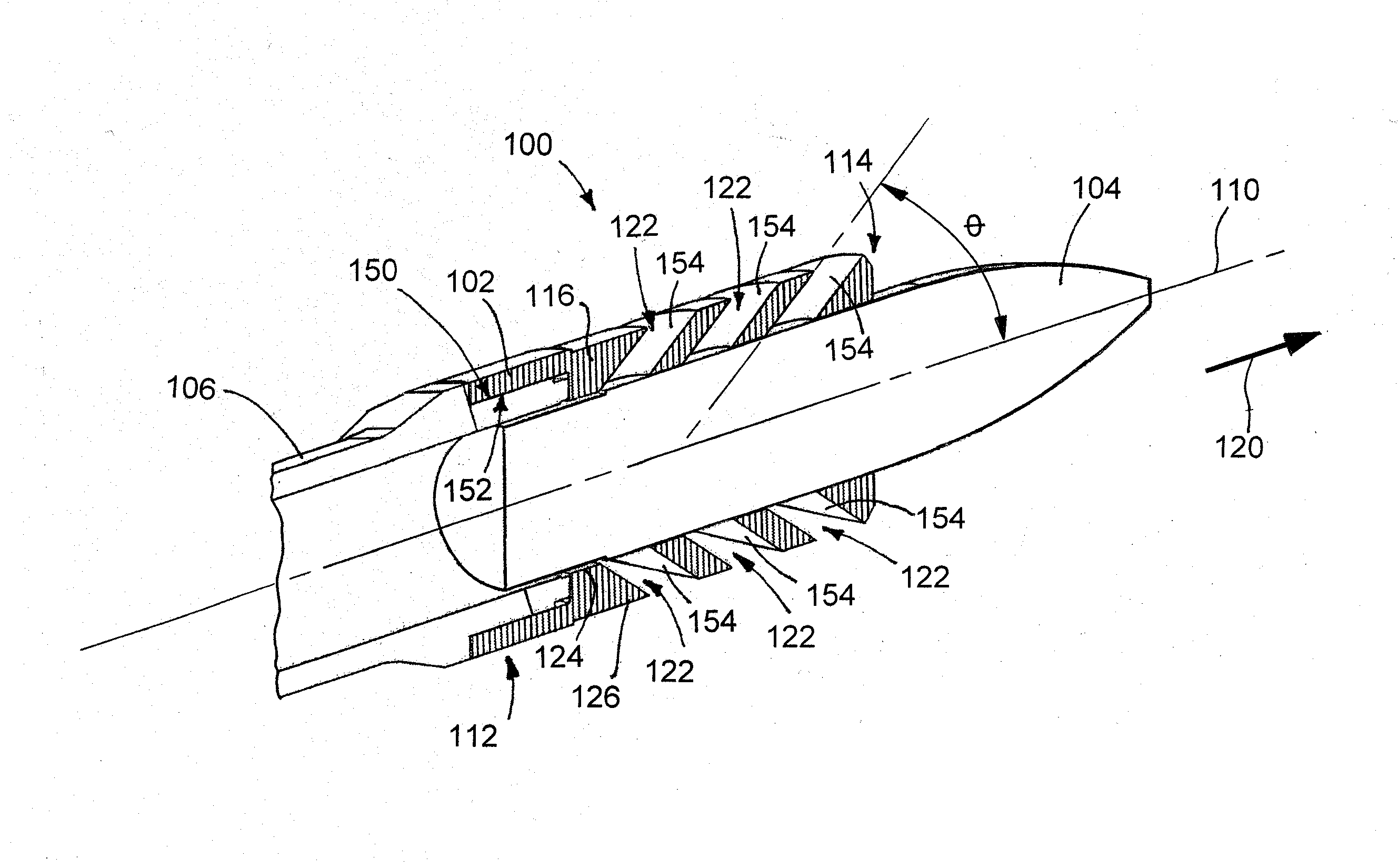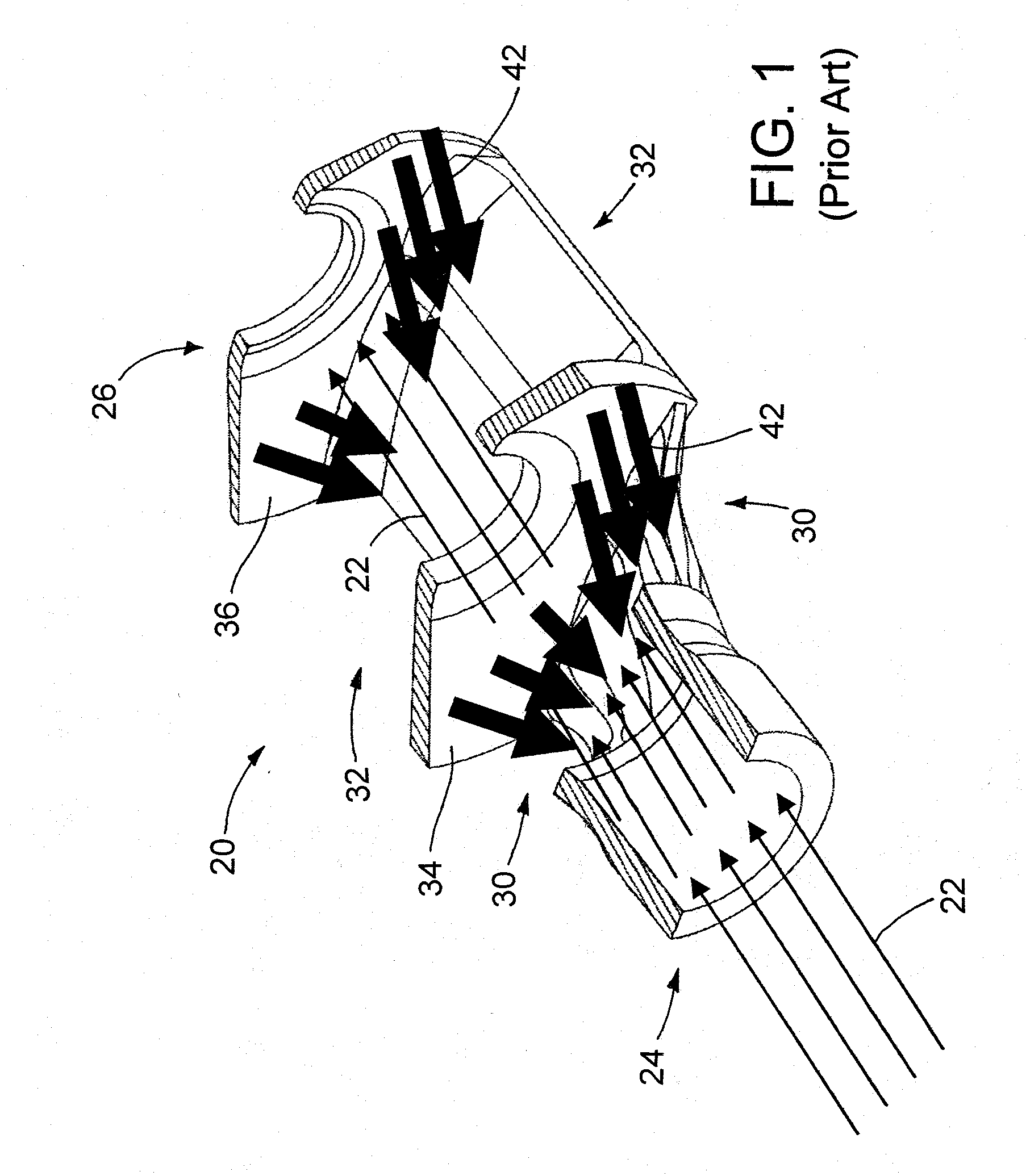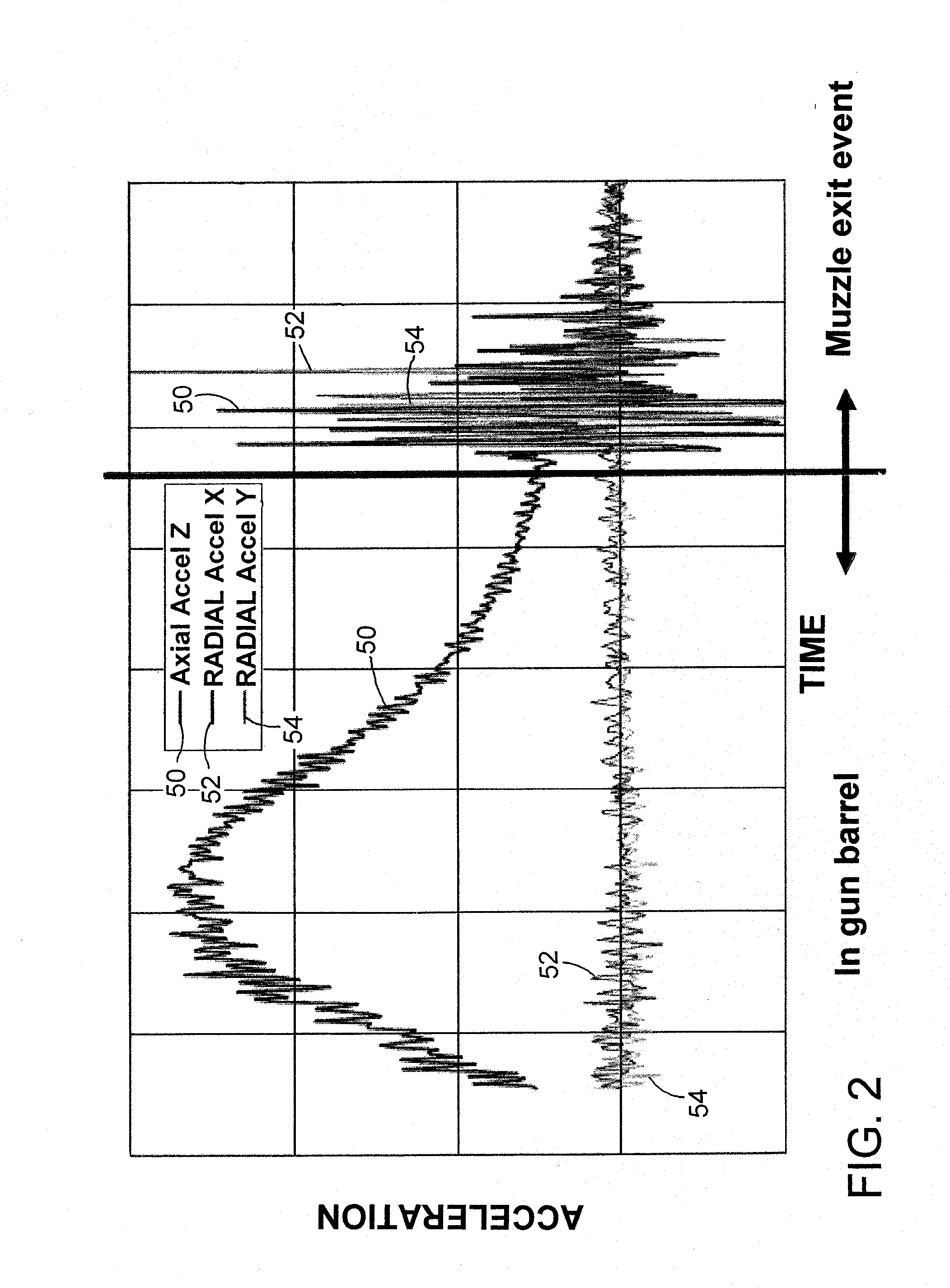Shock reduction muzzle brake
a technology of shock reduction and muzzle brake, which is applied in the field of large caliber weapons, can solve the problems of decompression shock on the projectile, damage to electronic components, and prevent them from performing, and achieve the effects of reducing base decompression shock, reducing decompression shock, and increasing decompression tim
- Summary
- Abstract
- Description
- Claims
- Application Information
AI Technical Summary
Benefits of technology
Problems solved by technology
Method used
Image
Examples
Embodiment Construction
[0026]Turning now to the drawings and a detailed description of exemplary embodiments of the invention, our invention provides a shock reduction muzzle brake 100 (FIG. 5) that generates a reaction force to counter recoil forces, while also minimizing or eliminating the shock waves and related effects created by prior muzzle brake designs. Prior muzzle brake designs often reflect shock waves back onto the projectile as it passes through the muzzle brake and also vent propellant gases so rapidly that the decompression effects on the base of the projectile can damage the electronic components of a smart projectile. The muzzle brakes provided by the invention have multiple, relatively small propellant gas exhaust ports that vent the pressurized propellant gases relatively slower to reduce the rate of decompression on the base of the projectile, and the propellant gas exhaust ports are forwardly-inclined to direct shock waves away from the path of the projectile.
[0027]As mentioned above,...
PUM
 Login to View More
Login to View More Abstract
Description
Claims
Application Information
 Login to View More
Login to View More - R&D
- Intellectual Property
- Life Sciences
- Materials
- Tech Scout
- Unparalleled Data Quality
- Higher Quality Content
- 60% Fewer Hallucinations
Browse by: Latest US Patents, China's latest patents, Technical Efficacy Thesaurus, Application Domain, Technology Topic, Popular Technical Reports.
© 2025 PatSnap. All rights reserved.Legal|Privacy policy|Modern Slavery Act Transparency Statement|Sitemap|About US| Contact US: help@patsnap.com



